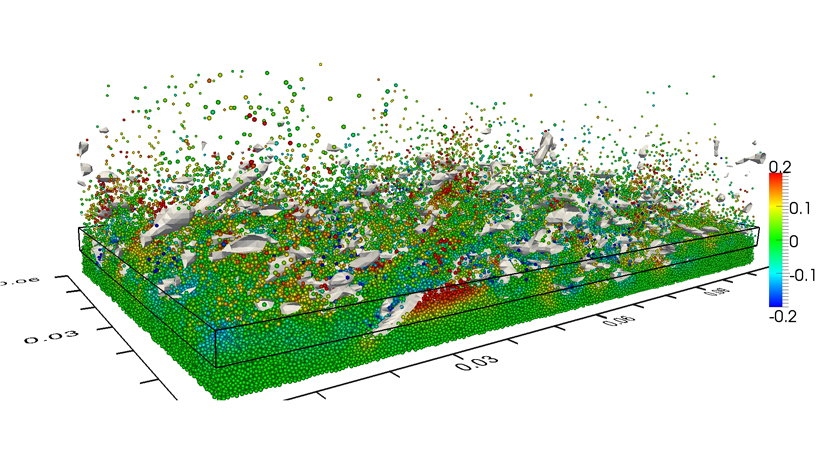A new numerical model of the behavior of sand grains in water provides insight into sediment transport, exploring details that are hard to capture with traditional laboratory flume experiments.
Schmeeckle’s model combines two types of simulations. One, called a large eddy simulation (LES), calculates the turbulent motion of water; the other, called the discrete element model (DEM), measures the motion of individual grains of sediment. Together, the models couple the force of turbulence on medium-sized grains and the force that those moving grains have on the water that carries them.
The author used the combined LES-DEM model to conduct 11 numerical experiments simulating a range of motion in water. Visualizations provide a view of the particles as they whirl and swirl in space and time. The model offers insight into the dynamics that sweep particles up from a river bottom and suspend them in the moving fluid. (Journal of Geophysical Research: Earth Surface, doi:10.1002/2013JF002911, 2014)
—Shannon Palus, Freelance Writer
Citation: Palus, S. (2015), Modeling sand grains in water, Eos, 96, doi:10.1029/2015EO022177. Published on 15 January 2015.
© 2014. American Geophysical Union. All rights reserved.
© 2014. American Geophysical Union. All rights reserved.

